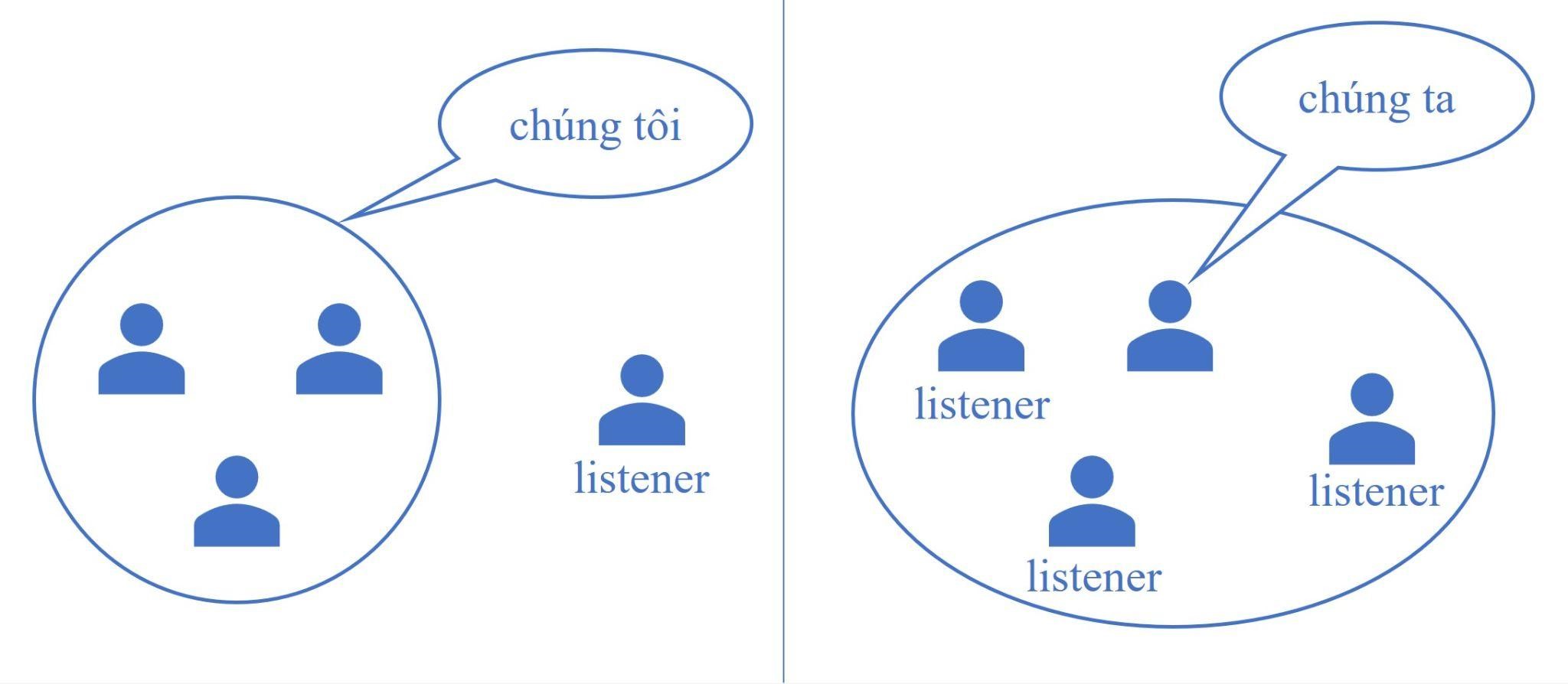In the previous lessons, we introduced that Vietnamese grammar is fundamentally simple and that there are no verb or adjective conjugations based on tense, number, or gender of the subject. However, a point to note is that when speaking Vietnamese, you should not omit the subject. Therefore, it is necessary to always include personal pronouns as the subject when conversing.
What are Personal Pronouns?
Personal pronouns refer to pronouns that designate the speaker, the listener, and the people or objects specified in the discourse (or the third person).
According to some studies, there are over 50 types of personal pronouns in Vietnamese. Vietnamese personal pronouns vary depending on the context of the conversation, the gender, age, and relationship of the person you are speaking to or talk about. Using the wrong personal pronoun can be disrespectful, so it is important to use them correctly.
1. For speaker to talk about themself ( I – myself or we)
| Personal pronouns | Relationship with listener |
| tôi | Someone younger or of the same age |
| con | Grandmother, grandfather, parents |
| cháu | Grandparents, parents’ siblings, someone nearly the same age as grandparents or parents |
| em | Siblings, slightly older, higher status |
| anh (male) | Someone younger, junior |
| chị (female) | Someone younger, junior |
| tao | Informal, expressing authority or anger |
| chúng tôi | People outside of the team or group |
| chúng ta | People within the team or group |

2. Referring to the listener
| Personal pronouns | meaning | Relationship with listener |
| Ông | Grandfather | A man considerably older than oneself (usually 70s and above) |
| Bà | Grandmother | A woman considerably older than oneself (usually 70s and above) |
| Bác | Uncle/Aunt | A person is older or around the age of one’s parents |
| Anh | Older brother | A man slightly older than oneself |
| Chị | Older sister | A woman slightly older than oneself |
| Bạn/Cậu | Peer | Friends, people of the same age |
| Em | Younger person | A person younger than oneself |
| Cháu | Child | A girl or boy |
3.Referring to someone not directly participating in the conversation
To refer to the third person, simply add “ấy” after the 2nd person pronoun.
Examples: ông ấy (that man), chị ấy (that woman)
Personal Pronouns using tips:
When speaking Vietnamese, some may find it difficult to choose the correct personal pronouns, but keeping the following points in mind should help you use them more easily.
- Regarding the first person, “Tôi” or “Chúng tôi” can be used in any situation. However, be aware that using “Tôi” or “Chúng tôi” might make the conversation sound more formal.
- Regarding the second person, it is fine to use “bạn” kindly when speaking to someone about the same age or slightly younger. For first meetings or when the age of the other person is not clear, it is best to use “anh” for men and “chị” for women.
- If it is impossible to guess the age of the other person, it is acceptable to ask them directly. In fact, verifying each other’s age at the start of a conversation is common among Vietnamese people. Asking a woman her age is not taboo; it is considered rude to use the wrong pronoun without asking.
